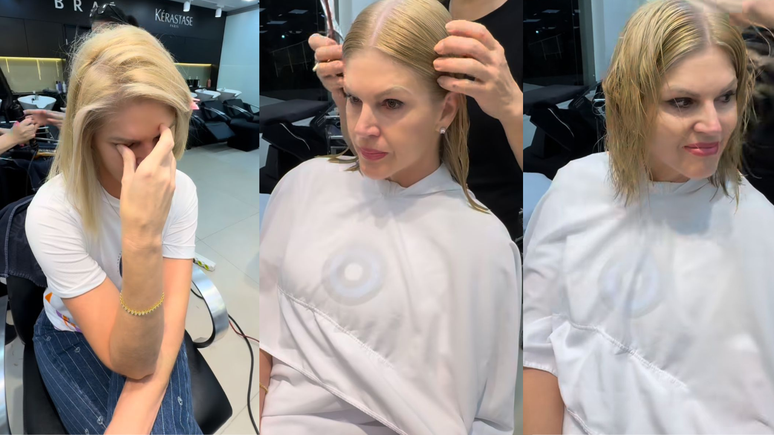Expert underlines the importance of daily treatments to maintain skin health and avoid disease
The skin is responsible for the execution of various fundamental functions for Body operation. This is the case of protection against external agents, the adjustment of body temperature and acting in the immune system.
According to data from the National Cancer Institute (Inca), 30% of malignant tumor recordings in Brazil are skin cancer. Therefore, it is necessary to invest organs and pay attention to warning signals to ensure the quality of life and the effective possibilities of prevention and treatment.
The doctor of the area of the dermatology of Amarsaúde, a network of partner clinics of the whole paper, vânia low, explains that the types of skin cancer can differ, so that the most common are the Basocellular carcinoma and the Epidermoid carcinoma. “Basocellular carcinoma is the most frequent and less aggressive, it usually appears in areas more exposed to the sun, such as face and neck. Epidermid carcinoma, although also connected to exposure to the sun, can develop in other parts of the body and, if not treated, can spread to other organs.”
Also, there is the melanomaWhich, despite being less common, is more aggressive and dangerous due to its high ability to trigger metastases. “Usually it arrives as irregular points or points and requires early diagnosis to increase the chances of healing,” warns the expert.
Signs of skin cancer
When it comes to healing possibilities, it is important to underline that the signs of the skin are essential for the Early diagnosis. In this sense, it is possible to differentiate the common points from suspicious signals with the help of ABCDE rule. The method is simple and helps to trace imperfections, also helping to identify suspicious injuries of melanoma. Find out how it works below.
A – Asymmetry: Irregular lesions, in which half is different from the other. They are more worrying.
B – Borde: Irregular edges, scarcely defined or serious. These are warning signals.
C – Color: Changes in the color of the lesion, such as shades of brown, black, blue or red. They deserve attention.
D – Diameter: stains or spots with more than 6 millimeters. It should be evaluated by a doctor.
E – Evolution: Any change of size, shape, color or symptoms such as itching and bleeding. Requires to consultation dermatological.
“Although most of the injuries are not cancer, it is essential to consider medical care every time there are doubts. Early diagnosis can save human lives,” says the professional.
Prevention
To detect skin cancer at the beginning, it is essential to consult a dermatologist regularly. In addition, individuals without cancer or risk factors are recommended to perform an annual check. In the meantime, for those who have a family history or high exposure to the sun, the frequency must be semi -yearual.
“During the consultation, we performed dermatoscopy, a non -invasive examination that expands skin lesions, allowing to identify the invisible changes to the naked eye. In more suspicious cases, the biopsy is required to confirm the diagnosis”, explains the expert.
Furthermore, Photographers injuries To follow its evolution over time it is an important measure. “The mapping of the digital body is a useful tool for monitoring changes in points and stains, especially in patients with many injuries. Even those who have no risk factors should visit the dermatologist at least once a year for a check,” says the dermatologist.
Risk factors
- Exposure to the excessive and unprotected sun
- Presence of many points (Nevos)
- Solar scrolling during childhood or adolescence
- Exposure to tanning chambers
- Family history
For those who work outdoors or practice sports, the tip is strengthen protection Through the use of suitable clothes, high water resistance sun protection and constant covered.
He takes care to protect the skin
The adoption of basic skin care begins Daily application of sun protectioneven in cloudy days or when you are at home. The ideal is to reapply the filter every two or three hours, especially after exposure to water and sweat. In addition, hydrating the skin after taking the bath using products suitable for the skin type are habits that make the difference.
Other recommended allies are hats, sunglasses and clothes protected by UV for those who spend a lot of time outdoors. “Avoiding exposure to the sun in moments of greater incidence, between 10 hours and 16 hours, is also important,” says the doctor.
Myths and truth about the skin
- To protect the skin from cancer, you don’t have to use sun protection on cloudy days
MYTH. The clouds prevent the passage of brightness, but not from the radiation of grapes and UVBs. Therefore, even on cloudy days, it is necessary to use sun protection.
- All skin types are subject to cancer
REAL. The incidence of cancer is not related to the color of the skin.
- Skin cancer is always caused by exposure to the sun
MYTH. Exposure to the prolonged sun without protection is one of the main causes of skin cancer, although other factors also influenced.
- The emergence of spots can indicate skin cancer
REAL. The appearance of dark spots with irregular edges, which have itching and peeling, change size, color or relief, can be a sign of skin cancer.
- Non Healing wounds can be skin cancer
REAL. If there is no healing of wounds for more than four weeks, the condition can be a warning sign. In this scenario, the first step is to look for a dermatologist for exams.
Source: Terra
Ben Stock is a lifestyle journalist and author at Gossipify. He writes about topics such as health, wellness, travel, food and home decor. He provides practical advice and inspiration to improve well-being, keeps readers up to date with latest lifestyle news and trends, known for his engaging writing style, in-depth analysis and unique perspectives.






![The freshness of ‘Fruto Proibido’ (Rita Lee & Tutti Frutti), 50 years later [RESENHA] The freshness of ‘Fruto Proibido’ (Rita Lee & Tutti Frutti), 50 years later [RESENHA]](https://rollingstone.com.br/wp-content/uploads/2025/06/rita-lee-fruto-proibido-1975-capa-foto-divulgacao.jpg)


